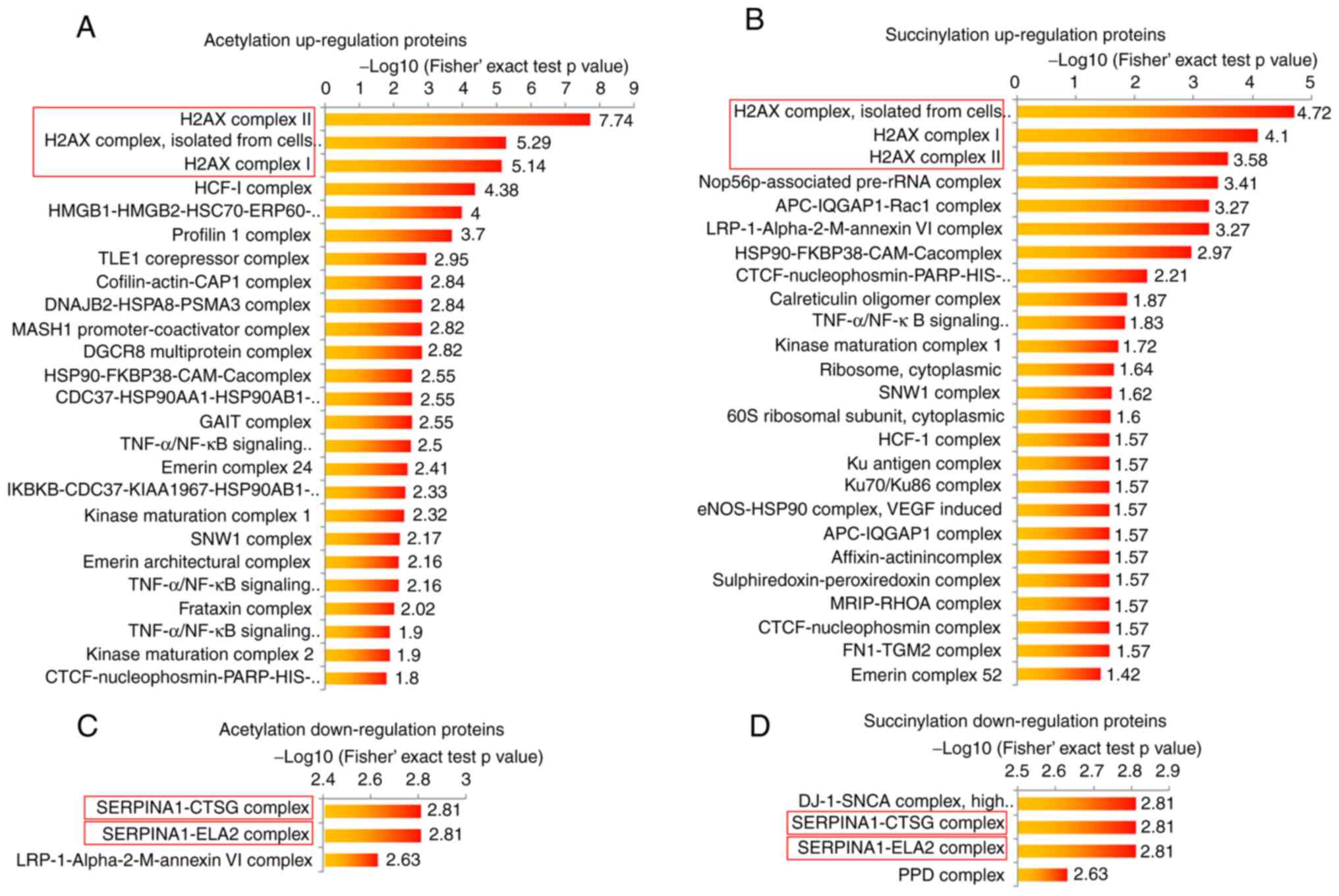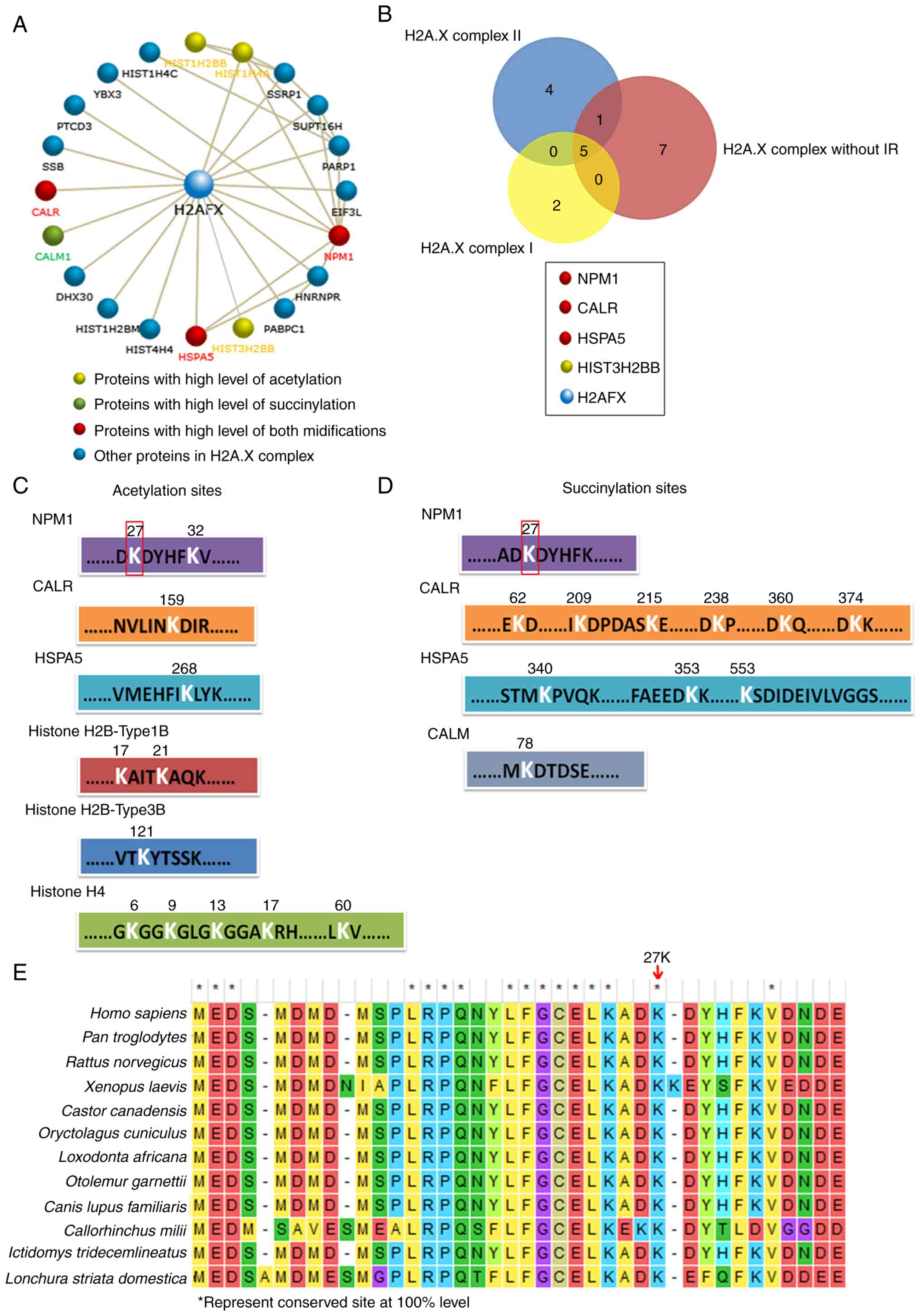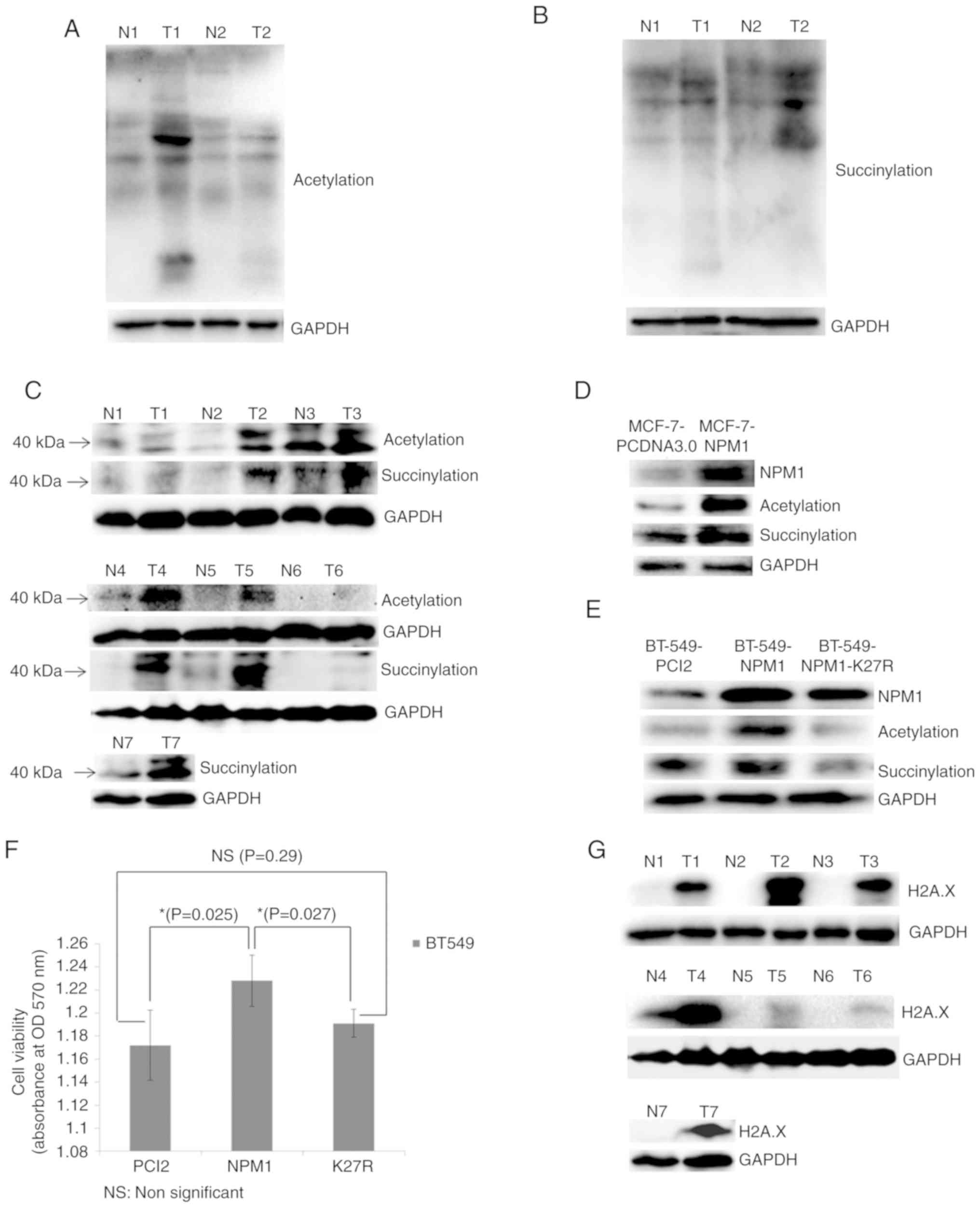|
1
|
DeSantis CE, Fedewa SA, Goding Sauer A,
Kramer JL, Smith RA and Jemal A: Breast cancer statistics, 2015:
Convergence of incidence rates between black and white women. CA
Cancer J Clin. 66:31–42. 2016. View Article : Google Scholar : PubMed/NCBI
|
|
2
|
DeSantis CE, Ma J, Goding Sauer A, Newman
LA and Jemal A: Breast cancer statistics, 2017, racial disparity in
mortality by state. CA Cancer J Clin. 67:439–448. 2017. View Article : Google Scholar : PubMed/NCBI
|
|
3
|
Li L, Tian T and Zhang X: Mutation
mechanisms of human breast cancer. J Comput Biol. 25:396–404. 2018.
View Article : Google Scholar : PubMed/NCBI
|
|
4
|
Takahashi M, Chiba N, Shimodaira H,
Yoshino Y, Mori T, Sumii M, Nomizu T and Ishioka C: OLA1 gene
sequencing in patients with BRCA1/2 mutation-negative suspected
hereditary breast and ovarian cancer. Breast Cancer. 24:336–340.
2017. View Article : Google Scholar : PubMed/NCBI
|
|
5
|
Sheikh A, Hussain SA, Ghori Q, Naeem N,
Fazil A, Giri S, Sathian B, Mainali P and Al Tamimi DM: The
spectrum of genetic mutations in breast cancer. Asian Pac J Cancer
Prev. 16:2177–2185. 2015. View Article : Google Scholar : PubMed/NCBI
|
|
6
|
Kulis M and Esteller M: DNA methylation
and cancer. Adv Genet. 70:27–56. 2010. View Article : Google Scholar : PubMed/NCBI
|
|
7
|
Ahmadzada T, Reid G and McKenzie DR:
Fundamentals of siRNA and miRNA therapeutics and a review of
targeted nanoparticle delivery systems in breast cancer. Biophys
Rev. 10:69–86. 2018. View Article : Google Scholar : PubMed/NCBI
|
|
8
|
Zhao QY, Lei PJ, Zhang X, Zheng JY, Wang
HY, Zhao J, Li YM, Ye M, Li L, Wei G and Wu M: Global histone
modification profiling reveals the epigenomic dynamics during
malignant transformation in a four-stage breast cancer model. Clin
Epigenetics. 8:342016. View Article : Google Scholar : PubMed/NCBI
|
|
9
|
Xi Y, Shi J, Li W, Tanaka K, Allton KL,
Richardson D, Li J, Franco HL, Nagari A, Malladi VS, et al: Histone
modification profiling in breast cancer cell lines highlights
commonalities and differences among subtypes. BMC Genomics.
19:1502018. View Article : Google Scholar : PubMed/NCBI
|
|
10
|
Wan Y, Liu J and Guo S: Effects of
succinylation on the structure and thermal aggregation of soy
protein isolate. Food Chem. 245:542–550. 2018. View Article : Google Scholar : PubMed/NCBI
|
|
11
|
Dehzangi A, Lopez Y, Lal SP, Taherzadeh G,
Sattar A, Tsunoda T and Sharma A: Improving succinylation
prediction accuracy by incorporating the secondary structure via
helix, strand and coil, and evolutionary information from profile
bigrams. PLoS One. 13:e01919002018. View Article : Google Scholar : PubMed/NCBI
|
|
12
|
Dawson MA and Kouzarides T: Cancer
epigenetics: From mechanism to therapy. Cell. 150:12–27. 2012.
View Article : Google Scholar : PubMed/NCBI
|
|
13
|
Hsieh TH, Hsu CY, Tsai CF, Long CY, Wu CH,
Wu DC, Lee JN, Chang WC and Tsai EM: HDAC inhibitors target HDAC5,
upregulate microRNA-125a-5p, and induce apoptosis in breast cancer
cells. Mol Ther. 23:656–666. 2015. View Article : Google Scholar : PubMed/NCBI
|
|
14
|
Ma L, Yuan L, An J, Barton MC, Zhang Q and
Liu Z: Histone H3 lysine 23 acetylation is associated with oncogene
TRIM24 expression and a poor prognosis in breast cancer. Tumour
Biol. 37:14803–14812. 2016. View Article : Google Scholar : PubMed/NCBI
|
|
15
|
Fermento ME, Gandini NA, Salomon DG,
Ferronato MJ, Vitale CA, Arévalo J, López Romero A, Nuñez M, Jung
M, Facchinetti MM and Curino AC: Inhibition of p300 suppresses
growth of breast cancer. Role of p300 subcellular localization. Exp
Mol Pathol. 97:411–424. 2014. View Article : Google Scholar : PubMed/NCBI
|
|
16
|
McClure JJ, Li X and Chou CJ: Advances and
challenges of HDAC inhibitors in cancer therapeutics. Adv Cancer
Res. 138:183–211. 2018. View Article : Google Scholar : PubMed/NCBI
|
|
17
|
Fiorentino F, Mai A and Rotili D: Lysine
acetyltransferase inhibitors: Structure-activity relationships and
potential therapeutic implications. Future Med Chem. 10:1067–1091.
2018. View Article : Google Scholar : PubMed/NCBI
|
|
18
|
Zhang Z, Tan M, Xie Z, Dai L, Chen Y and
Zhao Y: Identification of lysine succinylation as a new
post-translational modification. Nat Chem Biol. 7:58–63. 2011.
View Article : Google Scholar : PubMed/NCBI
|
|
19
|
Xiangyun Y, Xiaomin N, Linping G, Yunhua
X, Ziming L, Yongfeng Y, Zhiwei C and Shun L: Desuccinylation of
pyruvate kinase M2 by SIRT5 contributes to antioxidant response and
tumor growth. Oncotarget. 8:6984–6993. 2017. View Article : Google Scholar : PubMed/NCBI
|
|
20
|
Song Y, Wang J, Cheng Z, Gao P, Sun J,
Chen X, Chen C, Wang Y and Wang Z: Quantitative global proteome and
lysine succinylome analyses provide insights into metabolic
regulation and lymph node metastasis in gastric cancer. Sci Rep.
7:420532017. View Article : Google Scholar : PubMed/NCBI
|
|
21
|
Liu C, Liu Y, Chen L, Zhang M, Li W, Cheng
H and Zhang B: Quantitative proteome and lysine succinylome
analyses provide insights into metabolic regulation in breast
cancer. Breast Cancer. 26:93–105. 2019. View Article : Google Scholar : PubMed/NCBI
|
|
22
|
Pan J, Chen R, Li C, Li W and Ye Z: Global
analysis of protein lysine succinylation profiles and their overlap
with lysine acetylation in the marine bacterium vibrio
parahemolyticus. J Proteome Res. 14:4309–4318. 2015. View Article : Google Scholar : PubMed/NCBI
|
|
23
|
Weinert BT, Scholz C, Wagner SA,
Iesmantavicius V, Su D, Daniel JA and Choudhary C: Lysine
succinylation is a frequently occurring modification in prokaryotes
and eukaryotes and extensively overlaps with acetylation. Cell Rep.
4:842–851. 2013. View Article : Google Scholar : PubMed/NCBI
|
|
24
|
Wang Y, Guo YR, Liu K, Yin Z, Liu R, Xia
Y, Tan L, Yang P, Lee JH, Li XJ, et al: KAT2A coupled with the
α-KGDH complex acts as a histone H3 succinyltransferase. Nature.
552:273–277. 2017. View Article : Google Scholar : PubMed/NCBI
|
|
25
|
Wang F, Wang K, Xu W, Zhao S, Ye D, Wang
Y, Xu Y, Zhou L, Chu Y, Zhang C, et al: SIRT5 desuccinylates and
activates pyruvate kinase M2 to block macrophage IL-1β production
and to prevent DSS-induced colitis in mice. Cell Rep. 19:2331–2344.
2017. View Article : Google Scholar : PubMed/NCBI
|
|
26
|
Li L, Shi L, Yang S, Yan R, Zhang D, Yang
J, He L, Li W, Yi X, Sun L, et al: SIRT7 is a histone desuccinylase
that functionally links to chromatin compaction and genome
stability. Nat Commun. 7:122352016. View Article : Google Scholar : PubMed/NCBI
|
|
27
|
Tyanova S, Temu T and Cox J: The MaxQuant
computational platform for mass spectrometry-based shotgun
proteomics. Nat Protoc. 11:2301–2319. 2016. View Article : Google Scholar : PubMed/NCBI
|
|
28
|
Cox J, Neuhauser N, Michalski A, Scheltema
RA, Olsen JV and Mann M: Andromeda: A peptide search engine
integrated into the MaxQuant environment. J Proteome Res.
10:1794–1805. 2011. View Article : Google Scholar : PubMed/NCBI
|
|
29
|
UniProt Consortium: UniProt: A worldwide
hub of protein knowledge. Nucleic Acids Res. 47:D506–D515. 2019.
View Article : Google Scholar : PubMed/NCBI
|
|
30
|
Giurgiu M, Reinhard J, Brauner B,
Dunger-Kaltenbach I, Fobo G, Frishman G, Montrone C and Ruepp A:
CORUM: The comprehensive resource of mammalian protein
complexes-2019. Nucleic Acids Res. 47:D559–D563. 2019. View Article : Google Scholar : PubMed/NCBI
|
|
31
|
Pathan M, Keerthikumar S, Ang CS, Gangoda
L, Quek CY, Williamson NA, Mouradov D, Sieber OM, Simpson RJ, Salim
A, et al: FunRich: An open access standalone functional enrichment
and interaction network analysis tool. Proteomics. 15:2597–2601.
2015. View Article : Google Scholar : PubMed/NCBI
|
|
32
|
Kumar S, Stecher G and Tamura K: MEGA7:
Molecular evolutionary genetics analysis version 7.0 for bigger
datasets. Mol Biol Evol. 33:1870–1874. 2016. View Article : Google Scholar : PubMed/NCBI
|
|
33
|
Huang da W, Sherman BT and Lempicki RA:
Systematic and integrative analysis of large gene lists using DAVID
bioinformatics resources. Nat Protoc. 4:44–57. 2009. View Article : Google Scholar : PubMed/NCBI
|
|
34
|
R CoreTeam, . R: A language and
environment for statistical computing. R Foundation for Statistical
Computing; Vienna: 2017
|
|
35
|
Du YC, Gu S, Zhou J, Wang T, Cai H,
Macinnes MA, Bradbury EM and Chen X: The dynamic alterations of
H2AX complex during DNA repair detected by a proteomic approach
reveal the critical roles of Ca(2+)/calmodulin in the ionizing
radiation-induced cell cycle arrest. Mol Cell Proteomics.
5:1033–1044. 2006. View Article : Google Scholar : PubMed/NCBI
|
|
36
|
Hauer MH and Gasser SM: Chromatin and
nucleosome dynamics in DNA damage and repair. Genes Dev.
31:2204–2221. 2017. View Article : Google Scholar : PubMed/NCBI
|
|
37
|
Polo SE and Jackson SP: Dynamics of DNA
damage response proteins at DNA breaks: A focus on protein
modifications. Genes Dev. 25:409–433. 2011. View Article : Google Scholar : PubMed/NCBI
|
|
38
|
Bielak-Zmijewska A, Mosieniak G and Sikora
E: Is DNA damage indispensable for stress-induced senescence? Mech
Ageing Dev. 170:13–21. 2018. View Article : Google Scholar : PubMed/NCBI
|
|
39
|
Paull TT, Rogakou EP, Yamazaki V,
Kirchgessner CU, Gellert M and Bonner WM: A critical role for
histone H2AX in recruitment of repair factors to nuclear foci after
DNA damage. Curr Biol. 10:886–895. 2000. View Article : Google Scholar : PubMed/NCBI
|
|
40
|
Palla VV, Karaolanis G, Katafigiotis I,
Anastasiou I, Patapis P, Dimitroulis D and Perrea D: Gamma-H2AX:
Can it be established as a classical cancer prognostic factor?
Tumour Biol. 39:10104283176959312017. View Article : Google Scholar : PubMed/NCBI
|
|
41
|
Wagner VP, Martins MD and Castilho RM:
Histones acetylation and cancer stem cells (CSCs). Methods Mol
Biol. 1692:179–193. 2018. View Article : Google Scholar : PubMed/NCBI
|
|
42
|
Liu B, Wang T, Wang H, Zhang L, Xu F, Fang
R, Li L, Cai X, Wu Y, Zhang W and Ye L: Oncoprotein HBXIP enhances
HOXB13 acetylation and co-activates HOXB13 to confer tamoxifen
resistance in breast cancer. J Hematol Oncol. 11:262018. View Article : Google Scholar : PubMed/NCBI
|
|
43
|
Fang X, Lu G, Ha K, Lin H, Du Y, Zuo Q, Fu
Y, Zou C and Zhang P: Acetylation of TIP60 at K104 is essential for
metabolic stress-induced apoptosis in cells of hepatocellular
cancer. Exp Cell Res. 362:279–286. 2018. View Article : Google Scholar : PubMed/NCBI
|
|
44
|
Sharma GG, So S, Gupta A, Kumar R, Cayrou
C, Avvakumov N, Bhadra U, Pandita RK, Porteus MH, Chen DJ, et al:
MOF and histone H4 acetylation at lysine 16 are critical for DNA
damage response and double-strand break repair. Mol Cell Biol.
30:3582–3595. 2010. View Article : Google Scholar : PubMed/NCBI
|
|
45
|
Murr R, Loizou JI, Yang YG, Cuenin C, Li
H, Wang ZQ and Herceg Z: Histone acetylation by Trrap-Tip60
modulates loading of repair proteins and repair of DNA
double-strand breaks. Nat Cell Biol. 8:91–99. 2006. View Article : Google Scholar : PubMed/NCBI
|
|
46
|
Shandilya J, Swaminathan V, Gadad SS,
Choudhari R, Kodaganur GS and Kundu TK: Acetylated NPM1 localizes
in the nucleoplasm and regulates transcriptional activation of
genes implicated in oral cancer manifestation. Mol Cell Biol.
29:5115–5127. 2009. View Article : Google Scholar : PubMed/NCBI
|
|
47
|
Okuwaki M: The structure and functions of
NPM1/Nucleophsmin/B23, a multifunctional nucleolar acidic protein.
J Biochem. 143:441–448. 2008. View Article : Google Scholar : PubMed/NCBI
|
|
48
|
Swaminathan V, Kishore AH, Febitha KK and
Kundu TK: Human histone chaperone nucleophosmin enhances
acetylation-dependent chromatin transcription. Mol Cell Biol.
25:7534–7545. 2005. View Article : Google Scholar : PubMed/NCBI
|
|
49
|
Destouches D, Sader M, Terry S, Marchand
C, Maillé P, Soyeux P, Carpentier G, Semprez F, Céraline J, Allory
Y, et al: Implication of NPM1 phosphorylation and preclinical
evaluation of the nucleoprotein antagonist N6L in prostate cancer.
Oncotarget. 7:69397–69411. 2016. View Article : Google Scholar : PubMed/NCBI
|
|
50
|
Box JK, Paquet N, Adams MN, Boucher D,
Bolderson E, O'Byrne KJ and Richard DJ: Nucleophosmin: From
structure and function to disease development. BMC Mol Biol.
17:192016. View Article : Google Scholar : PubMed/NCBI
|



















